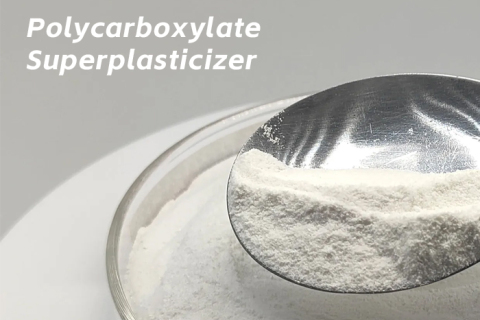
- Home
- >
News
Lithium Carbonate is a versatile chemical compound increasingly utilized in the construction sector, particularly as an additive in concrete and cement-based materials. Renowned for its ability to enhance concrete durability and mitigate specific chemical reactions, it is a valuable solution for infrastructure projects, industrial floors, and high-performance concrete applications. As the construction industry seeks innovative materials to improve longevity and sustainability, Lithium Carbonate is gaining traction for its unique benefits.
Polycarboxylate Superplasticizer Powder (PCE Powder) is an advanced high-performance admixture widely recognized in the construction industry for its exceptional water-reducing and workability-enhancing properties. This article briefly examines its characteristics, applications, and benefits in construction.
In the construction industry, protecting building structures from moisture damage is a key challenge to ensuring long-term durability. Water infiltration can lead to structural weakening, mold growth, and aesthetic deterioration, severely impacting the lifespan and value of buildings. To address this issue, Silicone Hydrophobic Powder has emerged as a highly effective waterproofing additive. It significantly enhances the water resistance of mortar, concrete, and other building materials, making it an essential innovation in modern construction engineering.
With the rapid development of the construction industry in Southeast Asia, the demand for high-performance building materials is increasing. Lithium silicate, as a high-performance inorganic material, is widely used in construction due to its excellent durability, ability to enhance concrete performance, and environmentally friendly properties. This article explores the key applications and advantages of lithium silicate in the Southeast Asian construction industry to help customers better understand and choose this product.
In modern construction, the demand for high-performance concrete is greater than ever. To meet these needs, Polycarboxylate Ether (PCE) Powder has emerged as a revolutionary superplasticizer, offering superior water reduction, enhanced workability, and long-term durability. If you are looking for a high-quality, cost-effective solution to improve your concrete performance, our PCE Powder is the perfect choice.
Cement-based self-leveling mortar is a material widely used for floor leveling in construction, known for its ease of application, excellent fluidity, and high strength. In recent years, lithium carbonate has become increasingly popular as an important additive in cement-based self-leveling mortars. This article explores the mechanisms of lithium carbonate in such mortars and the reasons behind its widespread adoption.
In the construction industry, the performance and quality of materials directly determine the success of a project. As a high-performance material, Polyvinyl Chloride Paste Resin (PVC Paste Resin) has become an ideal choice for the construction sector due to its excellent physical properties and wide range of applications. Whether for interior decoration, waterproofing materials, construction sealing, or floor coatings, PVC Paste Resin provides customers with efficient, durable, and environmentally friendly solutions.
As the construction industry demands high-performance materials, PCE (Polycarboxylate Ether) has become essential in concrete and cement products. These water-reducing agents enhance durability and quality. The unique structure of PCE allows for excellent dispersion and lowers the water-cement ratio, improving compressive strength and durability, especially for high-rise buildings and infrastructure projects. Additionally, PCE enhances water retention in concrete, minimizing shrinkage and cracking, thereby extending the lifespan of structures.
In the construction and building materials industry, the choice of adhesives and additives directly influences the performance and quality of the final product. If you are looking for a solution that can significantly enhance the adhesion, flexibility, and durability of materials, our VAE Redispersible Polymer Powder is your ideal choice.
Polycarboxylate superplasticizers (PCE) have significant applications in high-performance concrete (HPC) and ultra-high-performance concrete (UHPC). Here are several examples showcasing their advantages:
The mechanism of hydrophobic agents is based on their unique molecular structure, featuring a polar "head" and a non-polar "tail." The polar head adheres firmly to the pore surfaces of building materials, while the non-polar tail increases the contact angle between water molecules and the pore surface, creating an effective waterproof barrier that significantly prevents spontaneous water absorption.
Silicone Hydrophobic Powder (SHP) is an innovative additive designed for the construction industry, enhancing the water-repellent properties of various building materials. Its unique formulation makes it a crucial component for improving durability and performance in construction applications.












